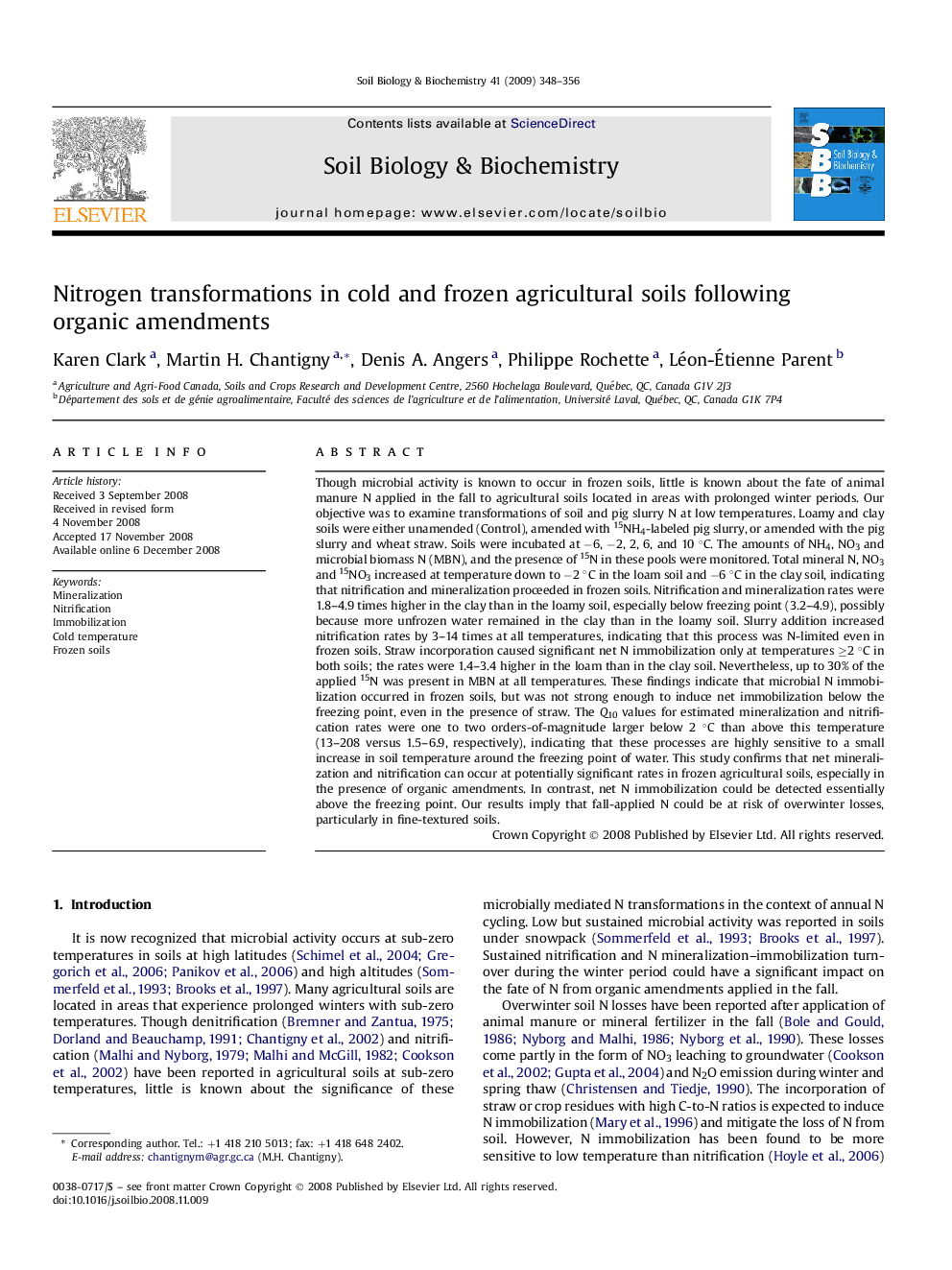| کد مقاله | کد نشریه | سال انتشار | مقاله انگلیسی | نسخه تمام متن |
|---|---|---|---|---|
| 2026136 | 1070020 | 2009 | 9 صفحه PDF | دانلود رایگان |

Though microbial activity is known to occur in frozen soils, little is known about the fate of animal manure N applied in the fall to agricultural soils located in areas with prolonged winter periods. Our objective was to examine transformations of soil and pig slurry N at low temperatures. Loamy and clay soils were either unamended (Control), amended with 15NH4-labeled pig slurry, or amended with the pig slurry and wheat straw. Soils were incubated at −6, −2, 2, 6, and 10 °C. The amounts of NH4, NO3 and microbial biomass N (MBN), and the presence of 15N in these pools were monitored. Total mineral N, NO3 and 15NO3 increased at temperature down to −2 °C in the loam soil and −6 °C in the clay soil, indicating that nitrification and mineralization proceeded in frozen soils. Nitrification and mineralization rates were 1.8–4.9 times higher in the clay than in the loamy soil, especially below freezing point (3.2–4.9), possibly because more unfrozen water remained in the clay than in the loamy soil. Slurry addition increased nitrification rates by 3–14 times at all temperatures, indicating that this process was N-limited even in frozen soils. Straw incorporation caused significant net N immobilization only at temperatures ≥2 °C in both soils; the rates were 1.4–3.4 higher in the loam than in the clay soil. Nevertheless, up to 30% of the applied 15N was present in MBN at all temperatures. These findings indicate that microbial N immobilization occurred in frozen soils, but was not strong enough to induce net immobilization below the freezing point, even in the presence of straw. The Q10 values for estimated mineralization and nitrification rates were one to two orders-of-magnitude larger below 2 °C than above this temperature (13–208 versus 1.5–6.9, respectively), indicating that these processes are highly sensitive to a small increase in soil temperature around the freezing point of water. This study confirms that net mineralization and nitrification can occur at potentially significant rates in frozen agricultural soils, especially in the presence of organic amendments. In contrast, net N immobilization could be detected essentially above the freezing point. Our results imply that fall-applied N could be at risk of overwinter losses, particularly in fine-textured soils.
Journal: Soil Biology and Biochemistry - Volume 41, Issue 2, February 2009, Pages 348–356